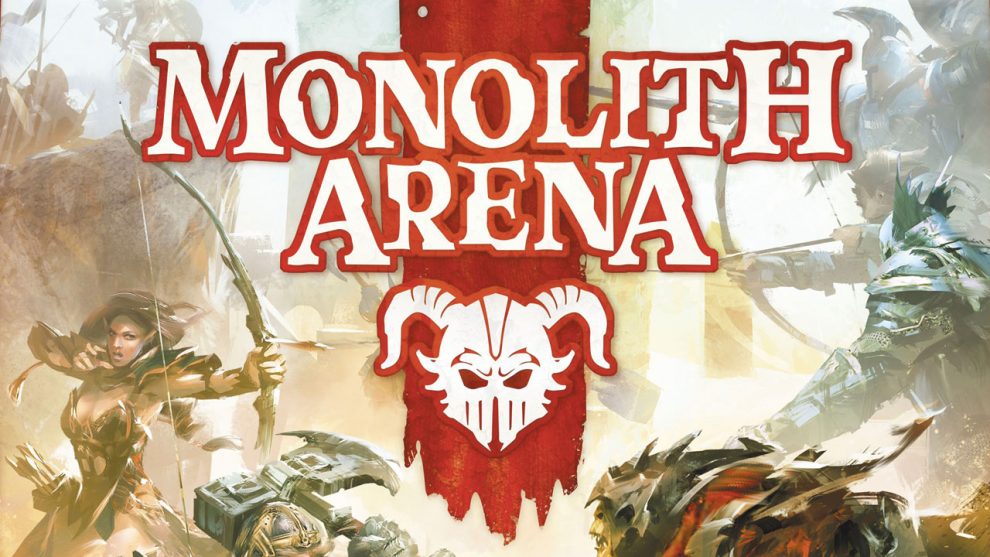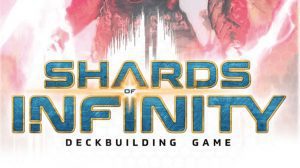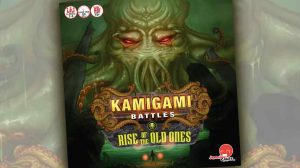No, I didn’t play Neuroshima Hex. I just want to get that out of the way before going further ahead because it seems every review talks about their nostalgia over the 2006 game. Monolith Arena is a fantasy remake of this decade-old system refined with years of game design experience and we are going to see if it’s worth looking into.
This is not a typical skirmish game though. You don’t set up your army or even place them on the map at the beginning of the game. Instead, you will draw a hand of three tiles, discard one, and play up to two. Attacking is something you can’t control; you draw an Order tile that allows you to attack or an attack starts when the board is full. The board itself is hexagon-shaped with far less spaces than you would expect in a typical game about people beating the crap out of each other.
It’s weird.
There are four factions and just as expected in these asymmetrical games, each faction has its own set of tools to mess around with. You and your opponent will pick one of these factions and slap your banner tile onto the board. This banner is the objective and you win by destroying your opponent’s banner. Easy enough so far.
Slapping Some Tiles
There are two different types of tiles: Orders and Board tiles. Order tiles represent different actions and are discarded once they are used. It can be anything from moving a Champion to starting an Attack. There are also some Order tiles used specifically for their faction, such as The Dragon’s Empire charge order.
Board tiles are further categorized into Banner, Champions, and Runes. As the name implies, these tiles are placed on the board itself. The Banner we’ve already explained, but Champions and Runes are where the “game” comes in.
Each Rune has a special ability associated with it such as extra defense or attack and a chain sprouting from the rune. To make use of these Runes, you need to connect the chain to the Champion to give them that power as if you are crafting the world’s most violent spider web.

Champions are the foundations of your strategy. They are the ones who will enforce your strategy and defend your banner. As you would expect, these Champions will have their abilities as well as range or melee attacks. Don’t worry, the game comes with a highly useful player aid that summarizes all of these skills. Melee and ranged attacks are executed in a fixed direction, meaning tile placement and rotation play a pivotal role on the battlefield.
Champions also have an initiative value because combat is simultaneous. When combat starts, Champions will attack each other starting with the highest initiative value and counting downwards. For example, if the highest initiative was 3, all Champions with 3 initiative will attack at the same time, followed by 2, and so forth. The aftermath of combat turns the arena into a series of vacant spots, allowing you to use them with newly deployed Runes and Champions.
All of this complication is captured in a simple draw 3, pick 2 system. I can already hear the groans but I prefer this method of randomization. It eases new players without knowing every minuscule detail yet it also forces you to constantly evaluate the situation every turn. If this was a luckless game, the game can be “solved” leading to a very predictable and boring game. Randomization leads to different problems for you to solve, giving you a new challenge each time you play. If I were to compare it to another game, it would be like Tetris with a splash zone.
After playing this game a few times, I am annoyed that I didn’t play Neuroshima Hex.
Let The Bodies Hit The Floor
The combat system is one of the most interesting interpretations I have ever seen. The idea that combat isn’t something you can fully control embeds this theme of trying to craft a better warmachine than your opponent. This arms race struggle permeates throughout the entire game from beginning to end with this tightrope tension. You need to make sure that every nut and bolt is screwed on properly since any miscalculation can be the end of you. Even when the inevitable combat does happen, the aftermath creates new opportunities for you to exploit and expand. It’s so simple yet brilliantly done.
The four factions involved also demonstrates how much creativity can be squeezed out of this system. Each faction plays vastly different than one another equipped with their potent tools. Lords of the Abyss love to disable their opponents by throwing nets at them while poisoning unfortunate targets. The Harbingers of the Forest is equipped with mobility in a game where movement after deployment is a luxury. The Dragon Empire has their cavalry units that can move and attack in a single turn without triggering combat. Finally, my favorite, the Guardians of the Realm are highly defensive and have Order tiles that can wipe out a group of board tiles huddled together.

There is a feature I didn’t mention: The Monolith. This is an advanced variant and considered to be the “true” version of the game. It is also the one thing that separates this game from its older brother. The Monolith is a 3 level tower with your banner at the top. The bottom 2 levels will have two tiles in there and those tiles are chosen by you in secret before the game starts. The idea behind this tower is you can “unfold it” by placing all three levels on the board as long as you have room and will “fold” back into a single tower after a Combat phase ends. It’s a more advanced version because there is extra complication involved and you can certainly build plenty of strategies around the two chosen tiles. The game is still enjoyable without this variant.
Even though I did give this game a lot of praise, some concerns cropped up during my play sessions.
Stick To Two
While the box does state 2 to 4 players, this is primarily a 2 player game. There is no free for all mode, so all player counts will be in two teams. Yes, that does include the 3 player count, and yes, it doesn’t work. 2 on 2 is decent and the small arena means that things will get boxed in quickly. My main issue is overthinking players will make the downtime in this game unbearable and completely ignore the 30-45 minute playtime printed on the box.
Another issue is the lack of content. The four factions in this game are well-designed, but it only takes a handful of plays to fully understand their facilities. Mastery of the game comes from understanding the board state and dealing with random draws, which is perfectly fine. The problem is that four factions don’t provide many different matchups for you to delve into. Even though this game was released in 2018, there are only 2 faction expansions available.
Despite the few missteps, this is a noteworthy skirmish game that deserves more attention. It’s a solid game for two players and works decently at four players with the right crowd. While many others don’t like the randomization, it is a benefit here since you have to be on your toes throughout the entire match instead of railroading your strategy. It is also one of the most newbie-friendly games thanks to the randomization and the wonderful player aids. Due to the short length, you can easily play this during small periods of downtime or do a best out of 3 with your gaming partner. I just wish there was more content to explore.
Buy Monolith Arena on Amazon US











I haven’t really been following this one since I have a truckload of Neuroshima Hex.
I’m surprised there’s no free-for-all mode in this. It works just fine in NH. My suggestion is to use the rule that you’re counting UP the damage you’ve inflicted to HQ’s (banners) rather than counting down to kill them. That keeps ganging up from being a problem.